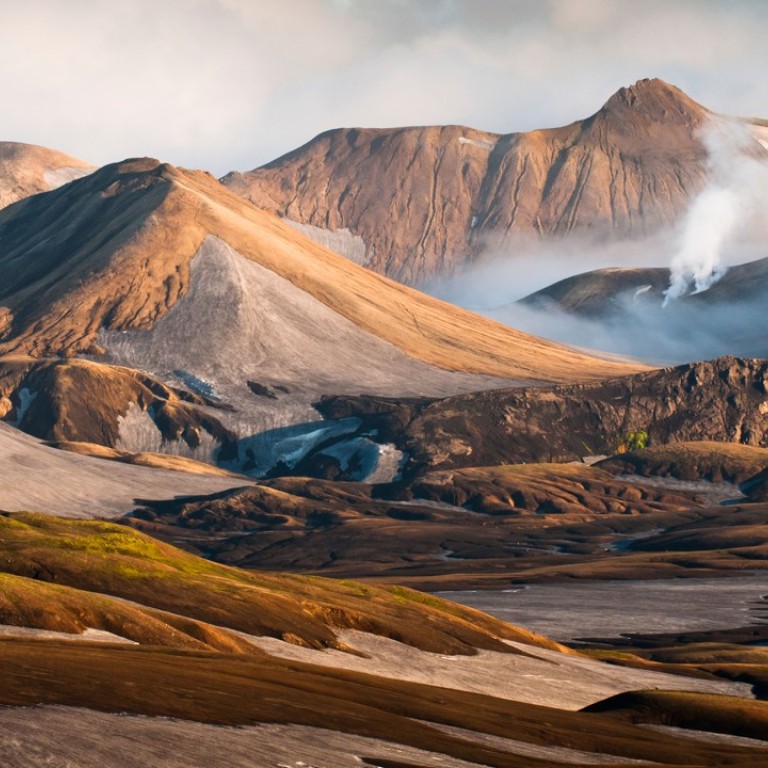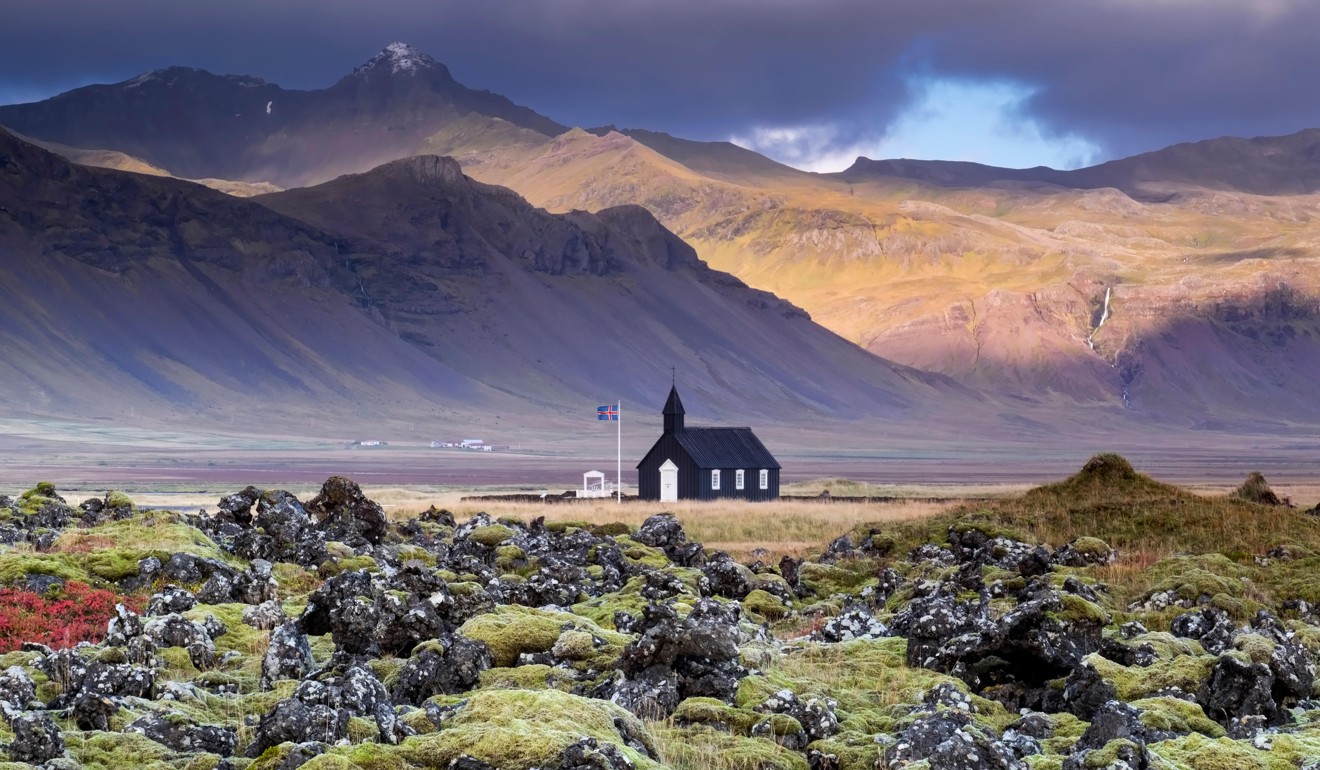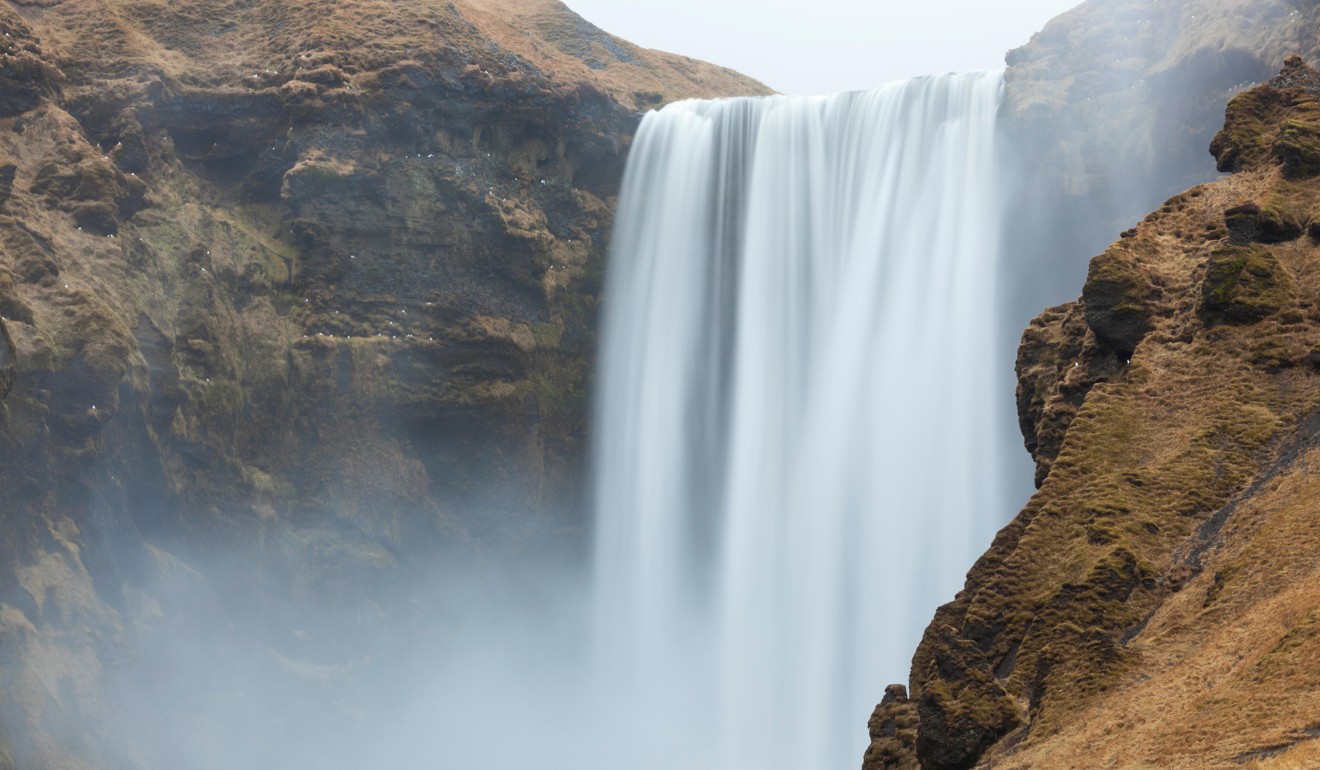
Inspirational Iceland: what to see in the ‘land of fire and ice’ and the best time to go
- Avoid the tourist hordes by going in winter and heading west to dramatic geothermal landscapes
- These are the places to see Iceland as it was until a few years ago – empty
Iceland is a land of explosions. Perched on the mid-Atlantic Ridge between two major tectonic plates, it is home to 30 active volcanoes, many of them beneath glaciers, leading to frequent floods of lava and/or melted ice.
However, Iceland has experienced another kind of explosion in recent years, as tourists flock to see the “land of ice and fire”.
Relaxation, natural wonders top bucket lists of stressed Hong Kong travellers
This small country of 334,000 people in the North Atlantic came to the attention of the world in 2011, when drifting ash from its Eyjafjallajokull volcano closed European airspace for a week. More recently, its frequent use as a filming location for HBO series Game of Thrones contributed to tourist arrivals surging by 40 per cent in 2016, according to Iceland’s Arion Bank. That growth has since slowed to single figures though.
Over two million tourists from around the world now visit Iceland each year – quadruple the number of visitors compared to 2010. But it is still easy to dodge the crowds, as long as you know when and where to go.

Most tourists come in July and August to sample the brief Icelandic summer, or in late June to experience what it is like to have almost 24 hours of daylight around the summer solstice.
The majority stay in the capital, Reykjavik, and clog up the so-called “golden circle” of Pingvellir National Park, the Geysir geothermal area, and Gullfoss waterfall. The golden circle is busy all year-round, with selfie sticks and drones everywhere.
There are two easy ways of sidestepping all that – come in winter and head west.

By September the roads are emptying out, and the onset of freezing temperatures and snow makes Iceland a winter wonderland.
Relatively few venture west to the dramatic geothermal landscapes of Reykholt, the fiords of Vatnsnes, or the stunning Snaefellsnes Peninsula. They are the best places to get to if you want to see Iceland as it was until just a few years ago – almost completely empty.
Here are some of the best places you can visit in west Iceland, which together make for the perfect round-trip from Reykjavik.
1. Vatnsnes Peninsula
It does not get much more remote than the Vatnsnes Peninsula in Iceland’s northwest. A good first day on a round-trip is to drive three hours north from Reykjavik up Route 1, a ring road that goes all the way around Iceland.

It passes by the often deserted Glanni Waterfall (a dramatic cascade that crashes through three gaps in a lava field and is partially frozen in winter), and two fiords, Hrutafjorour and Midfjordur.
Look for the “petrified dragon” (a slim 30-metre high basalt stack just off the coast that resembles a cut-out of a dragon drinking from the ocean) at Hvitserkur.
Snorkelling in Iceland: swim between tectonic plates in Silfra fissure
Completely deserted in winter, Illugastadir – just around the coast from Hvitserkur – has boardwalks going past eiderdown duck nesting areas that lead to observation hives overlooking dozens of common and grey seals in their natural environment. Keep your distance so as not to disturb the creatures.
Hvammstangi, a few miles to the south, is the only town in the surrounding area. There is a good chance to see the northern lights over Midfjordur from here, though it is easier if you drive a short distance out of town into the darkness.

2. Bjarnarhofn and Kolgrafarfjordur
Driving onto the wild and deserted Snaefellsnes Peninsula, the northern coastal road sweeps around jagged mountain ranges and curves around fiords, the largest of which is Kolgrafarfjordur. The eastern side of the road bridge offers a spectacular view of snow-covered mountains reflected in smooth water. Keep an eye out for killer whales, which are occasionally seen here during winter.
It is also a fine place to clear your nostrils after visiting the Bjarnarhofn Shark Museum, where the traditional Icelandic hakarl – fermented Greenland shark – is produced.
Fillets of shark meat hang in a barn behind the museum. Visitors are also given a chance to sample hakarl: ferment shark that tastes like old cheese laced with alcohol.

3. Kirkjufell Mountain
You have probably seen Kirkjufell before – most likely with northern lights swirling around it. It is a favoured backdrop for landscape photographers, though its pointed peak is only visible from one place. The place is just in front of Kirkjufellsfoss, and is a curved and often icy cascade that can easily be framed with the mountain in the background.
This makes Kirkjufell West Iceland's only real ‘honeypot' site for tourists, and the car park there is often full even in the depths of winter.
The best tactic is to stay in nearby Grundarfjorour just a mile away, and visit Kirkjufell late at night, or find another vantage point between the village and the mountain.

4. Buoakirkja
Small, simple and impossibly stylish, the black and isolated Buoakirkja, or “church at Buda”, is a curiosity for visiting photographers on the Snaefellsnes Peninsula. It is also a place to photograph the northern lights. Although you can drive here at night and park your car nearby, an easy method is to stay at Hotel Budi, which is within stumbling distance. There is nothing else around for miles.

5. Lava falls and Langjokull glacier
6. Reykjanes Unesco Global Geopark
Despite its proximity to Reykjavik, most visitors skip over the Reykanes Peninsula, but that is a big mistake. At Krysuvikurbjarg Cliffs on its south coast is a vast wall of rock buzzing with thousands of kittiwakes in winter (though you will need a 4x4 to get there).
Nearby is Gunnuhver, its fissures in the Earth’s surface pumping out steam. No wonder there are geothermal power plants across this region of Iceland, most famously at Svartsengi, home to the Blue Lagoon. This is perhaps Iceland’s most famous tourist attraction, and yet it is relatively easy to find a quiet spot. It has become more expensive – now US$60 just for entry – but the introduction of pricier tickets has at least thinned out the crowds.
When to go: the busy months of June, July and August are the ones to avoid visiting Iceland. In December and January there is just not enough daylight to do much touring. Instead, aim for September-November, or February-April.
Iceland the hard way – Hong Kong friends cycle country’s coastline
Getting there: the quickest route to Reykjavik from Hong Kong is to fly by Finnair or Icelandair via the Finnish capital, Helsinki (14 hours, 50 minutes). Slightly longer routes include SAS via Oslo or Stockholm (16 hours, 30 minutes), Cathay Pacific via Copenhagen (16 hours, 30 minutes), and Cathay Pacific or British Airways via London (17 hours, 40 minutes).

